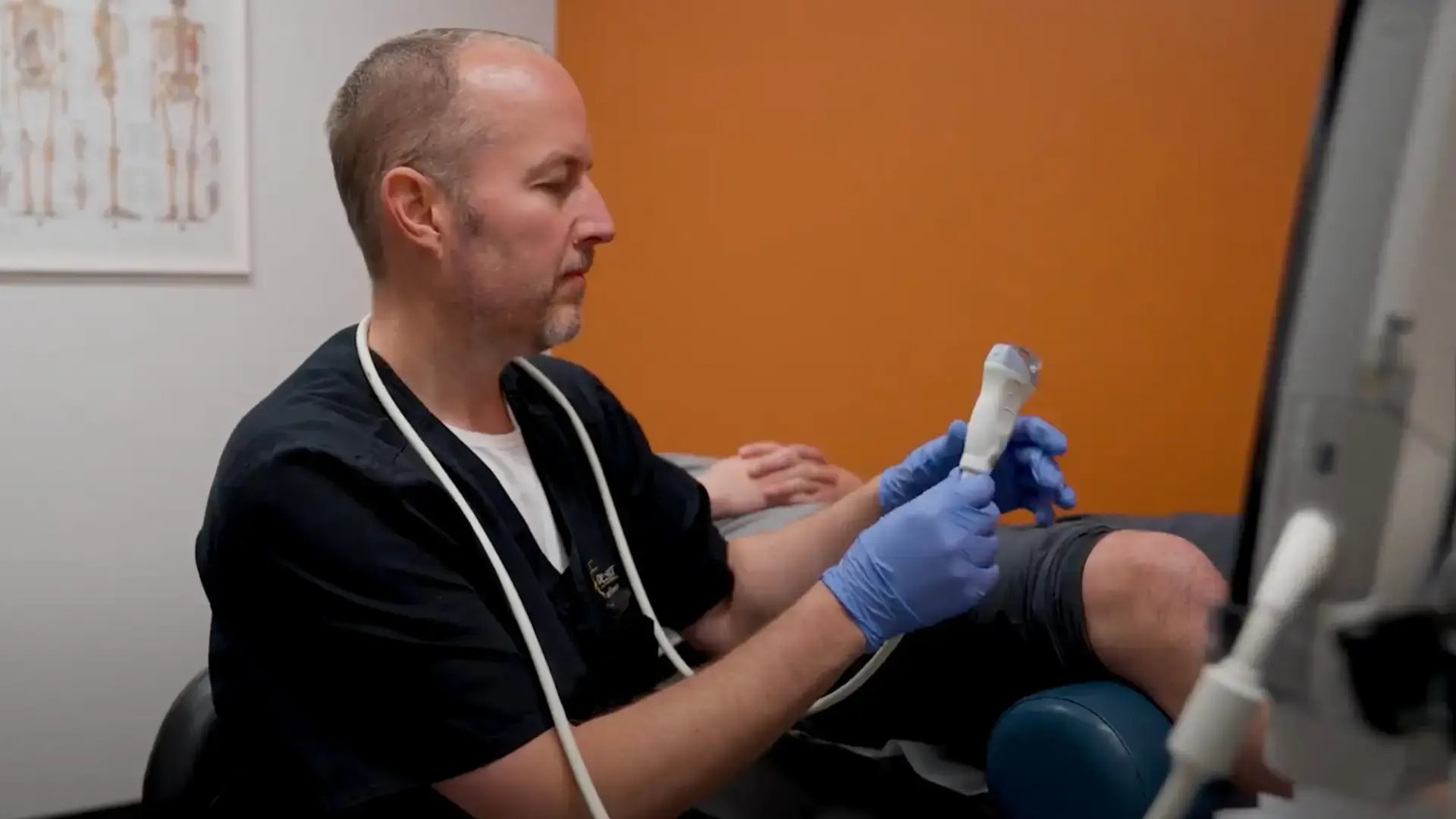Frequently Asked Questions at Desert Spine and Sports Physicians

Regenerative Medicine Frequently Asked Questions
What is regenerative medicine?
Regenerative medicine stimulates the body’s own healing mechanisms to repair damaged tissues, reduce pain, and restore function without surgery. At Desert Spine and Sports Physicians, this includes advanced image-guided procedures such as PRP and BMAC therapy for musculoskeletal and spine conditions.
How does regenerative medicine differ from traditional pain management?
Traditional pain management often masks symptoms. Regenerative treatments aim to repair the root cause of the condition, helping restore tissue health and function, especially in spine and orthopedic injuries.
Is regenerative medicine covered by insurance?
PRP and BMAC procedures are not covered by insurance. However, office visits and diagnostic imaging will be billed to your insurance if Desert Spine and Sports Physicians is contracted with your plan.
What’s the cost of regenerative medicine?
The fee for PRP therapy in joints and musculoskeletal tissues is $950. PRP in the spine as well as BMAC, typically performed in combination with PRP for greater efficacy, is priced separately and determined during consultation.
Are regenerative treatments safe?
Yes. These treatments use the patient’s own blood or bone marrow, significantly reducing the risk of reaction. All injections are delivered with fluoroscopic or ultrasound guidance by board-certified, fellowship-trained physicians.
Who is a good candidate for regenerative medicine?
Candidates include individuals with joint, tendon, ligament, or spine-related pain unresponsive to conservative care. These treatments are particularly effective for patients with injuries or those looking to avoid surgery.
What is Platelet Rich Plasma?
PRP is a concentration of platelets derived from your own blood, containing growth factors that promote healing. Desert Spine and Sports Physicians utilizes PRP in various applications, including joints, ligaments, tendons, and the spine, such as epidural, facet, SI joint, and intradiscal injections.
What is BMAC?
Bone Marrow Aspirate Concentrate (BMAC) is collected from your bone marrow and contains regenerative cells that support healing. It’s used together with PRP to treat severe degenerative conditions, spine pathology, or multi-site injuries.
How long to see results from PRP / BMAC?
Results vary, but most patients begin to notice improvement between 6-12 weeks. Functional recovery and pain reduction continue to progress for several months after treatment.
What is recovery like for PRP / BMAC?
Mild soreness may occur for a few days after the injection, but downtime is minimal. Patients typically resume modified activity within days, with progressive return to full function as healing advances.
What is the PRP injection like?
The process involves a blood draw, centrifugation to isolate platelets, and precise image-guided injection. The entire in-office procedure takes about 60 minutes and is often well-tolerated.
How do I schedule a consult for regenerative medicine?
Call our office or request an appointment online. Our team will conduct a full evaluation to determine if regenerative options like PRP or BMAC are appropriate for your condition.
Questions About Conditions We Treat
What types of spine conditions does Desert Spine and Sports Physicians treat?
We treat many spine conditions including but not limited to herniated discs, spinal stenosis, lumbar and cervical radiculopathy, degenerative disc disease, facet arthritis and SI joint dysfunction. Our non-surgical spine care emphasizes precision diagnosis and image-guided interventions for lasting relief.
What orthopedic conditions are treated here?
We manage tendon, ligament, joint, and soft tissue injuries—including osteoarthritis, tendonitis, labral and meniscal tears, and overuse injuries. Care plans are individualized and often incorporate regenerative options and targeted therapies.
Do we treat chronic pain?
Yes. We specialize in spine and musculoskeletal pain that persists beyond typical healing timelines. Our goal is to reduce pain, improve function, and address the source, not just the symptoms.
How do you know if your pain is chronic?
Pain is considered chronic if it lasts more than three months or recurs over time. If it interferes with movement, sleep, or quality of life, it’s time to seek professional evaluation.
What is a herniated disc?
A herniated disc occurs when disc material pushes beyond its normal space and irritates nearby structures, often affecting nerve roots. This can lead to pain, weakness, or numbness in the arms or legs, depending on the level affected.
How do you know if you have radiculopathy?
Radiculopathy refers to pain caused by irritation or compression of a spinal nerve root. Symptoms may include burning, numbness, tingling, or weakness radiating into the limbs, and are best diagnosed through a thorough evaluation and imaging.
Can chronic pain be treated without surgery?
Absolutely. Our surgeons specialize in non-surgical treatments, including PRP and BMAC, fluoroscopic-guided injections, and individualized physical therapy that provide lasting relief and help patients avoid invasive surgeries.
What conditions benefit from PRP/ BMAC therapy?
These therapies are commonly used for moderate to severe osteoarthritis, larger tendon tears, labral or meniscal injuries, intradiscal degeneration, disc annular tears, and multi-site structural injuries.
What is the cause of my chronic pain?
Pain may result from unresolved injuries, disc or joint degeneration, nerve root irritation, or cumulative biomechanical stress. Our specialists use advanced diagnostics to uncover the root cause and build a plan that promotes healing and long-term relief.
Do you treat sports injuries?
Yes. We manage sports-related injuries affecting joints, tendons, and the spine, ranging from overuse to acute trauma. Our goal is to return athletes to peak function with the safest, most effective non-surgical care available.
